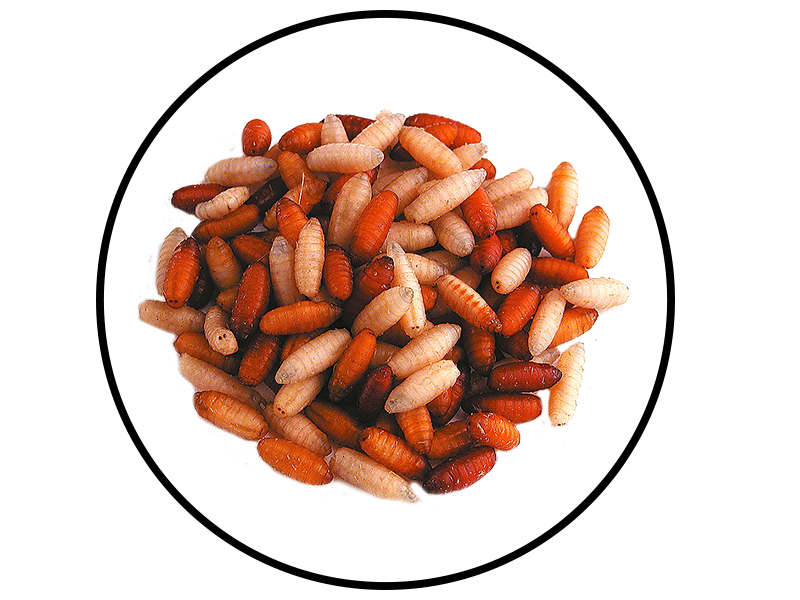The best bait to use for roach
Like most anglers I love fishing for roach, and while other species may grab my attention throughout the year, my season wouldn’t be complete without a campaign for these amazing fish.
We often take roach for granted, given that they can be found in almost every river, lake or canal, but this disguises the fact that they are superbly adapted to such a wide range of different environments.
One of the factors that enables roach to be so successful is their ability to eat a wide range of different natural foods. If you look at the mouth of a roach it isn’t specialised, which hints that roach are the all-rounders of the coarse fish world. Roach are equally adept at feeding on small snails as they are bloodworm.
Emerging insects will get them to rise in the water column to feed, whereas an abundance of caddis larvae may seem them feeding on the bottom. Roach will even chomp mouthfuls of algae from the surface of water plants and stones, even though they can only digest the tiny animals that are hidden within.
It should be no surprise that roach will feed on a wide range of different baits too, but choosing the right one for each situation can make all the difference to your catches.
By thinking about how the roach are behaving in each season we can see why our tactics need to change throughout the year.
AUTUMN
This year I am expecting some great river roach sport, thanks to the regular rain giving running waters a welcome tinge of colour.
This definitely improves roach sport, which reaches a climax as the light-level falls in the evening. Seed fishing with hemp and tares is what autumn evenings were made for, although a handful of casters for hookbaits will see bites often easier to hit and can bring a bigger stamp of fish.
Other alternatives to try at this time of the year are stewed wheat and groats, both very cheap to buy and easy to prepare, along with elderberries that make a useful hookbait.
Feeding little-and-often is the key with all of these baits. A pinch of seeds every minute will get the roach competing. If you are impatient, try starting with a maggot on the hook, as it can take a while for the roach to feed confidently on seeds.
At this time of the year the roach are often feeding on tiny black water snails, which I am sure explains the effectiveness of these dark baits.
WINTER
The depths of winter are my favourite time to fish for roach because they can be relied to feed in conditions that most would regard as hopeless. In fact, really cold weather can be the best time to target specimen roach because, for some reason, the small fish will go off the feed, but the specimens will still take a bait, especially in the first hour of darkness.
With small fish out of the equation, this is the time of year to use maggots both as feed and on the hook. I like to carry a mixture of white and red grubs, normally flavoured with pineapple, and use a combination of the two colours on the hook.
For river fishing you may find that dace and chublets make maggot fishing tricky. If this is the case then switching to bread can be more selective. Rather than use flake, as many roach anglers advise, I tend to use an 8mm punch of bread instead, finding the smaller offering more acceptable in the cold. Feed a mixture of fine punch crumb and liquidised bread that has been dampened down enough to hold together when squeezed firmly.
With natural food at a seasonal low, roach have to use all their resourcefulness to find enough food in winter. Often they will be full of algae, which has little nutritional value, but which does hold some tiny invertebrates that they can digest. I am sure that it is the lack ofbetter quality natural food, combined with the desire to feed, that makes roach so catchable in the depths of the winter.
SPRING
Water temperatures tend to rise much more slowly than air temperatures, so by the time my spring tactics come to the fore, the rivers will have closed and so my roach fishing will take place on stillwaters. With spawning taking place around mid-May, the roach will be looking to eat well at this time of the year in order to build up their reserves. Larger baits such as worm and caster can be the roach angler’s best friend during this period. Try using a cocktail consisting of half a dendrobaena worm tipped with a caster on a size 14 hook.
Evening fly hatches will see roach shoals coming up in the water and often topping on the surface at dusk. Try fishing two casters on the hook, which is a slow-sinking hookbait, and feed pinches of caster over the top to attract the larger roach.
SUMMER
Very few roach anglers bother fishing for the species during the summer, but they could be missing out. A lot of big roach are accidentally caught by carp anglers using particle baits and mini boilies so I would base my tactics around these baits.
I have found sweetcorn particularly effective on rivers during summer. Try fishing the first couple of hours into darkness with a light scattering of grains and some hemp. This has worked particularly well for me.
Mini boilies are probably the most selective big-roach bait there is. I stick to 10mm baits, given the relatively small mouth of even a two-pounder.




